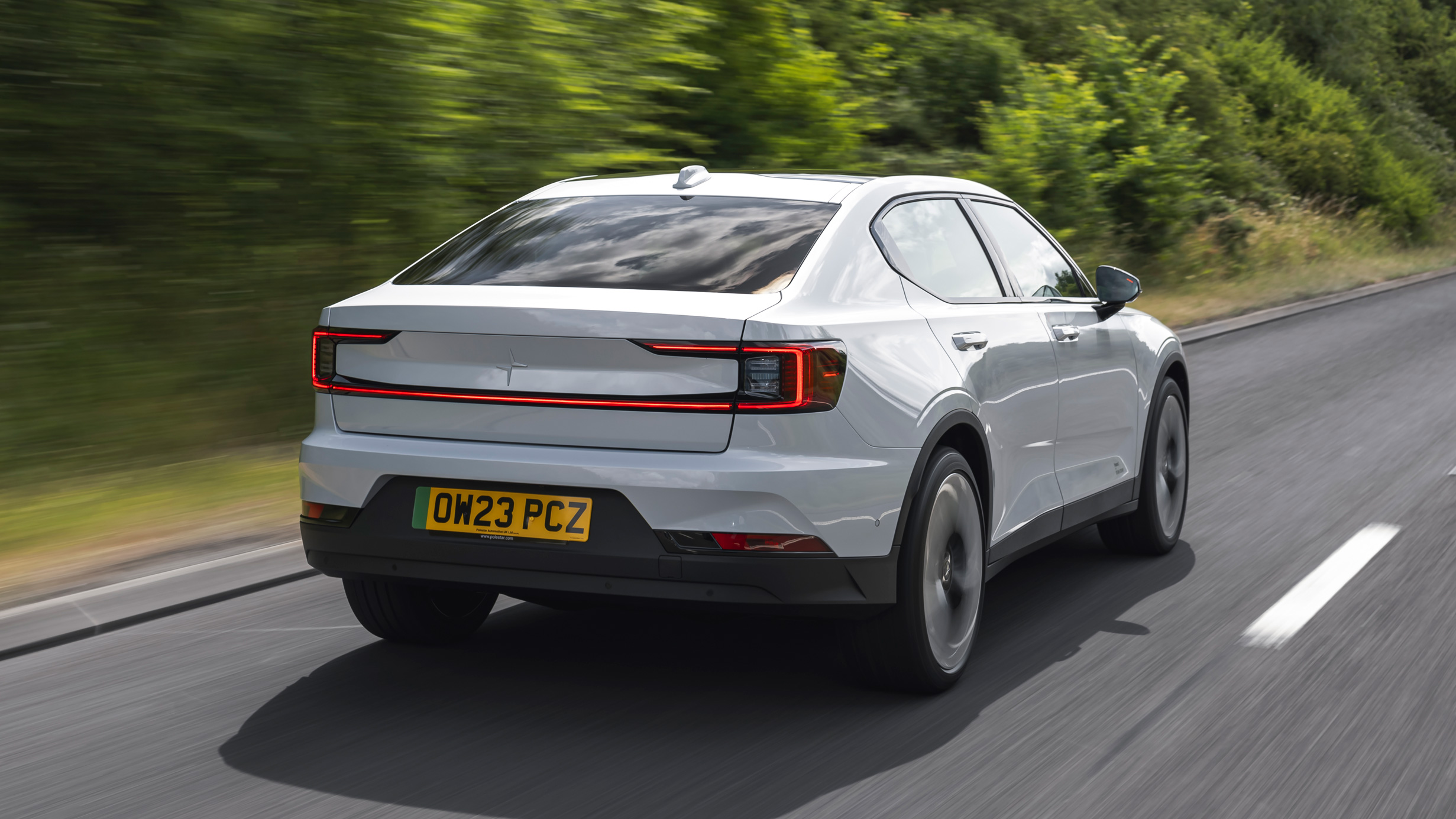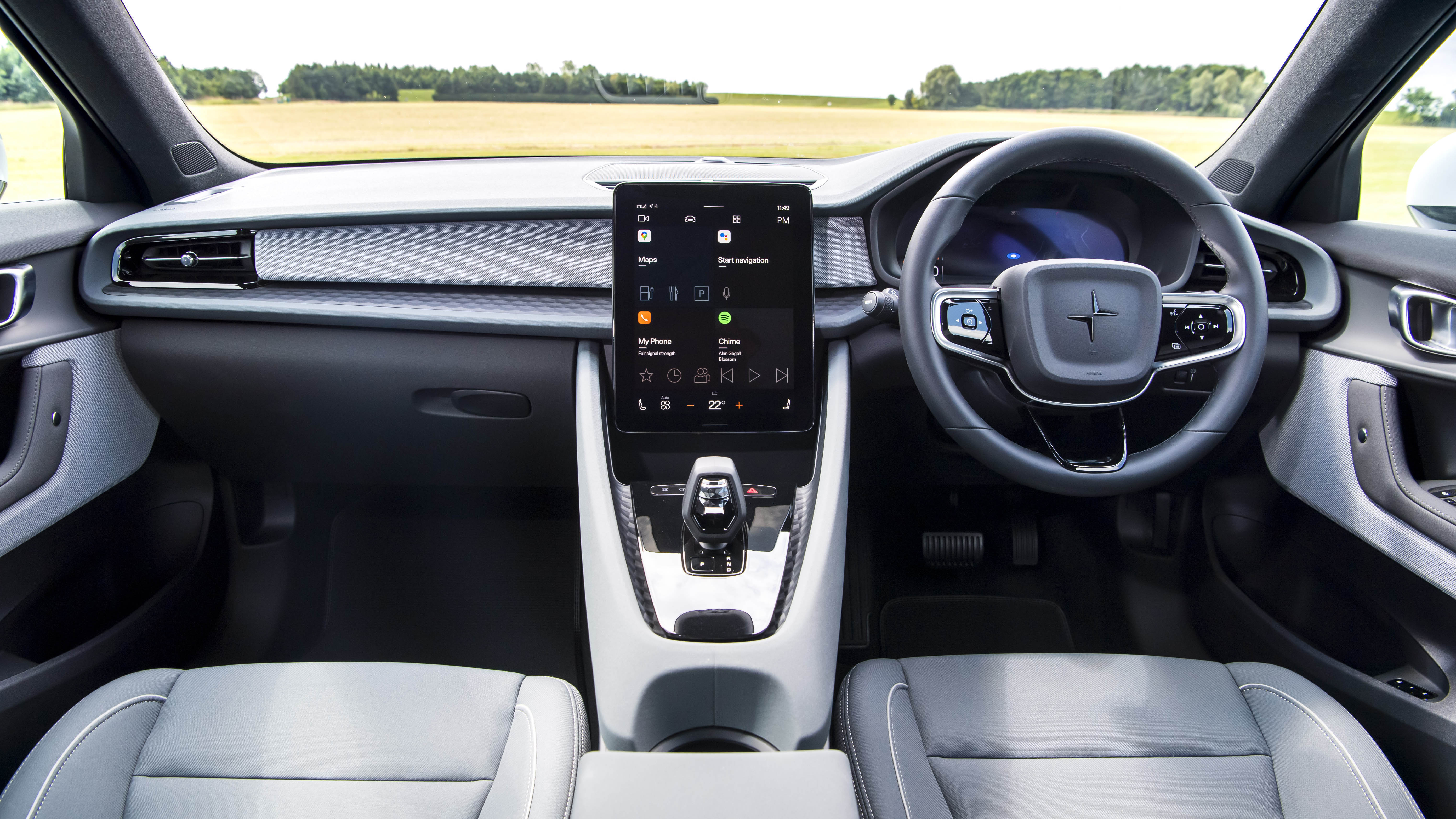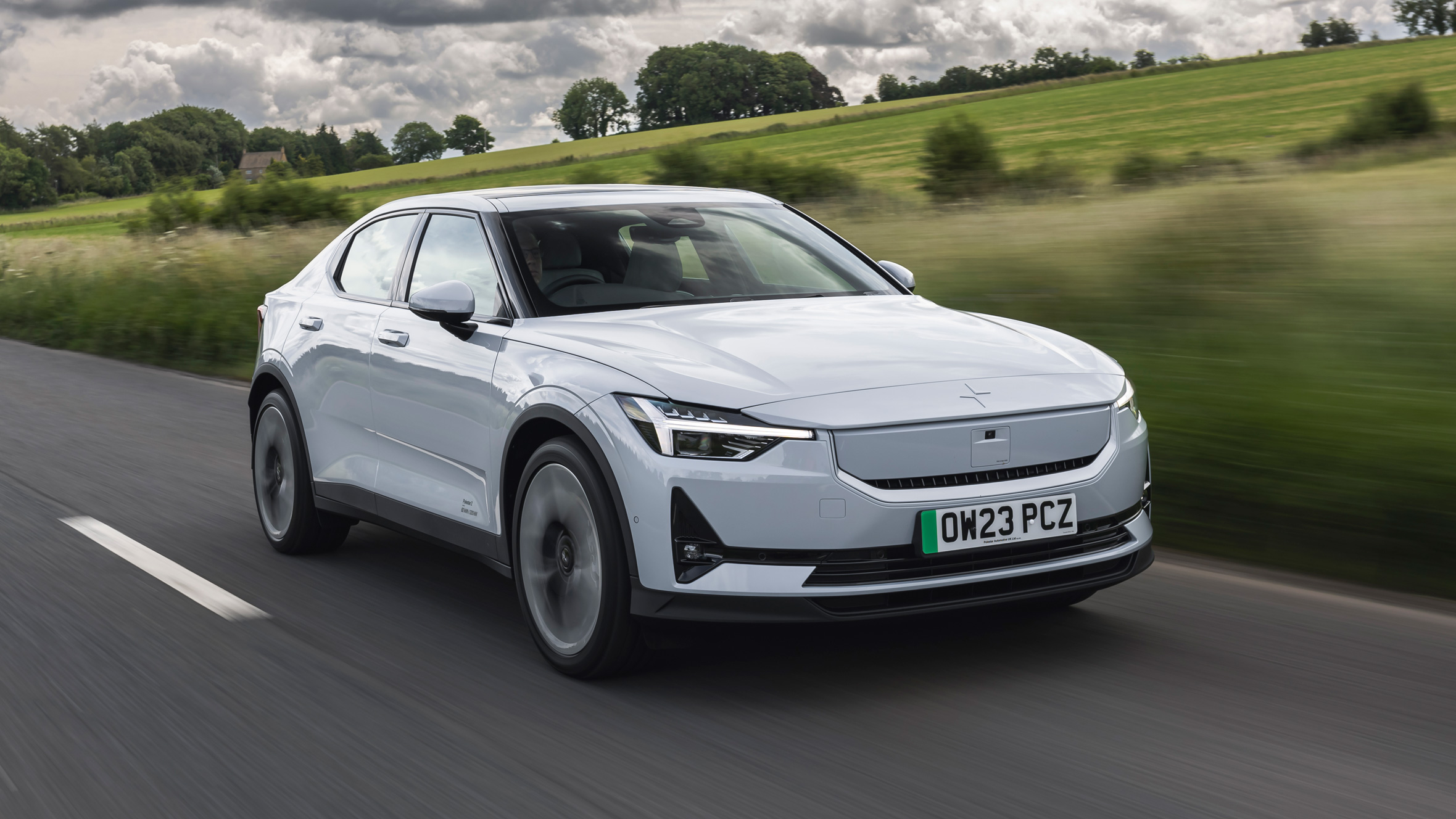
Interior
What is it like on the inside?
Dispel any notion of this being a Volvo cabin with some new floor mats. The Polestar 2 is bespoke, and rather brilliant inside.
The centrepiece, as with any self-respecting upstart electric car, is a giant touchscreen. Here it’s a portrait display measuring 11.2-inches across and mounted high enough that it’s in your eyeline without suffering from ‘lost iPad on the dash’ disorder. The graphics are crisp, the operation impressively rapid, with no stuttering or discernible loading time. It’s one of the most smartphone-like displays we’ve ever seen, because the Polestar is the first car to use Google OS.
So it has ‘Hey Google’ voice assistant, you can sign into your Google account to personalise your settings, Google Maps is built in and you can access your Spotify account too. Via the Google Play store, you can also download your own apps, so if you prefer navigating with Waze or listening to Apple Music, that’s all inbound. Apple CarPlay is supported, FYI.
On top of that, the 2023 update includes a screen showing 'real world range', which uses analytics nerdery to figure out range based on your driving style. Makes you wonder how unreliable the trip computer was before...
Is it fiddly to operate on the move?
Nope. If you’re deft you can use the gear selector as a plinth for your forearm, steadying your hand as you delve into the screen. Handy when adjusting the climate control, which puts you a pothole away from turning the seat heaters on by accident, though as ever we’d have preferred physical buttons/knobs to control the heating/aircon.
In front of the driver, there’s a further display that can be configured with a widescreen map, as well as your speed and range data. Although be warned: the range readout drops in 10-mile increments which can be disconcerting. Only the steering wheel switchgear and the volume/play knob seem to have come from a contemporary Volvo, and they work just as well as they do in an S90. The quality is exemplary, and truly wouldn’t embarrass a car at twice the price. The standard kit list is fairly healthy too.
Is it comfy?
Mostly, but we’re not completely sold on the driving position. Nor do the seats offer much lateral support. You sit quite upright which means stretching out that left leg on a long drive is tricky, and if you’re a particular height there’s no support for your left elbow. At least the right limbs are well catered for.
While you sit a little higher than in, say, an Audi A4, the effect is masked by the high door tops and cocooning nature of the cabin. It’s also not austere nor overly sporty – light woods and fabrics are employed instead of business-suited carbon fibre. It’s a lodge retreat, in a pine forest. Lovely.
Polestar's also changed its perspective on leather too. So you can spec leather, but as standard the interior is cow-free, to give customers choice that our bovine friends presumably never got.
Will my passengers enjoy it as much as me?
In the back there’s enough room for adults to sit behind adults, though it doesn’t feel as roomy as a conventional saloon because of the smaller glass area. The optional panoramic roof helps here, making the whole passenger compartment feel much roomier.
The boot isn’t gargantuan, but 405 litres should be fine for everyday tasks and 1,095 is plenty with the back seats down. And because it’s a proper hatchback (which Polestar wanted as a selling point beyond the Model 3’s pokey saloon tailgate), the opening is huge. It’s not invaded by charging cables either, as they’re housed in a separate cubby under the bonnet.
Featured

Trending this week
- Car Review
BMW 1 Series
- Top Gear's Top 9
Nine dreadful bits of 'homeware' made by carmakers






